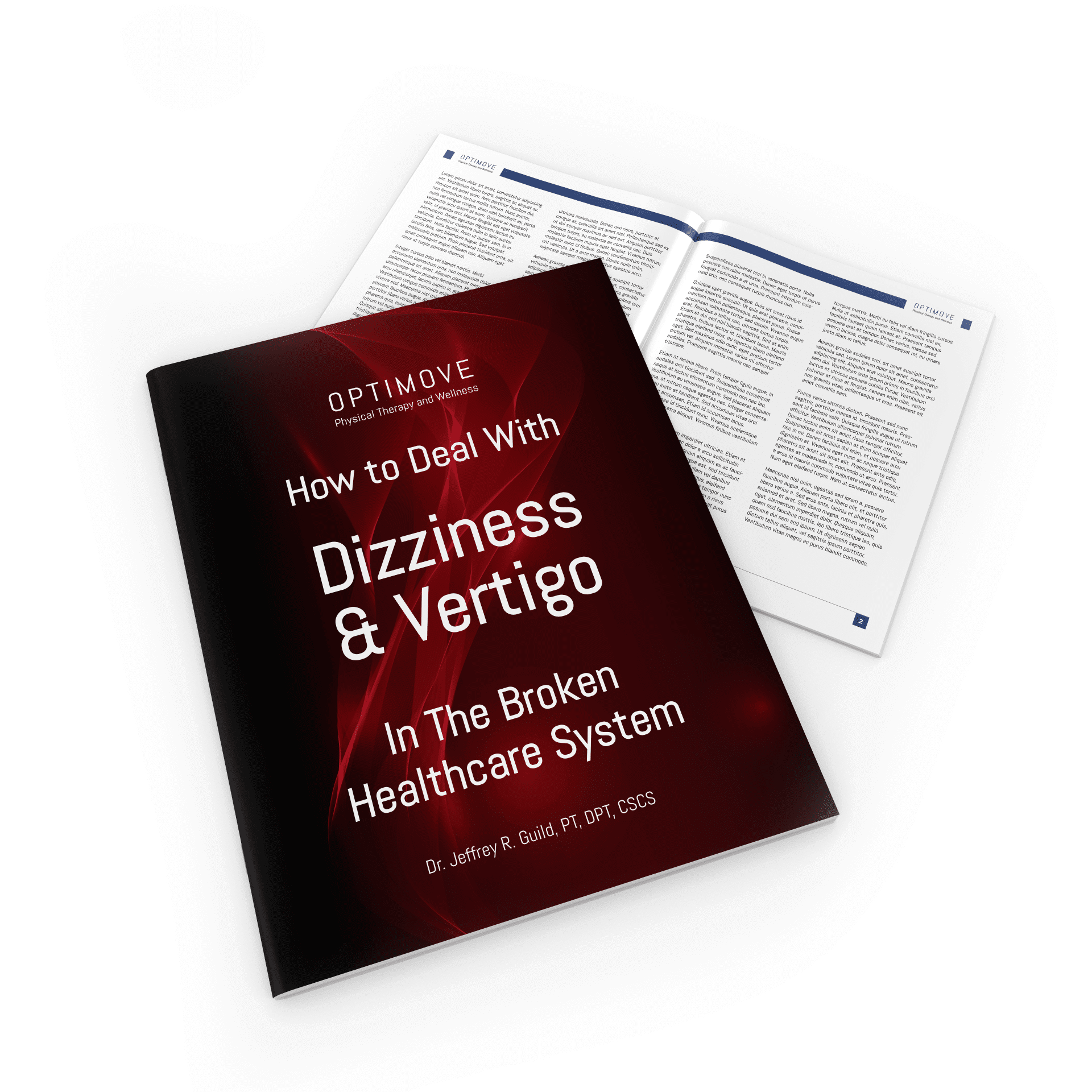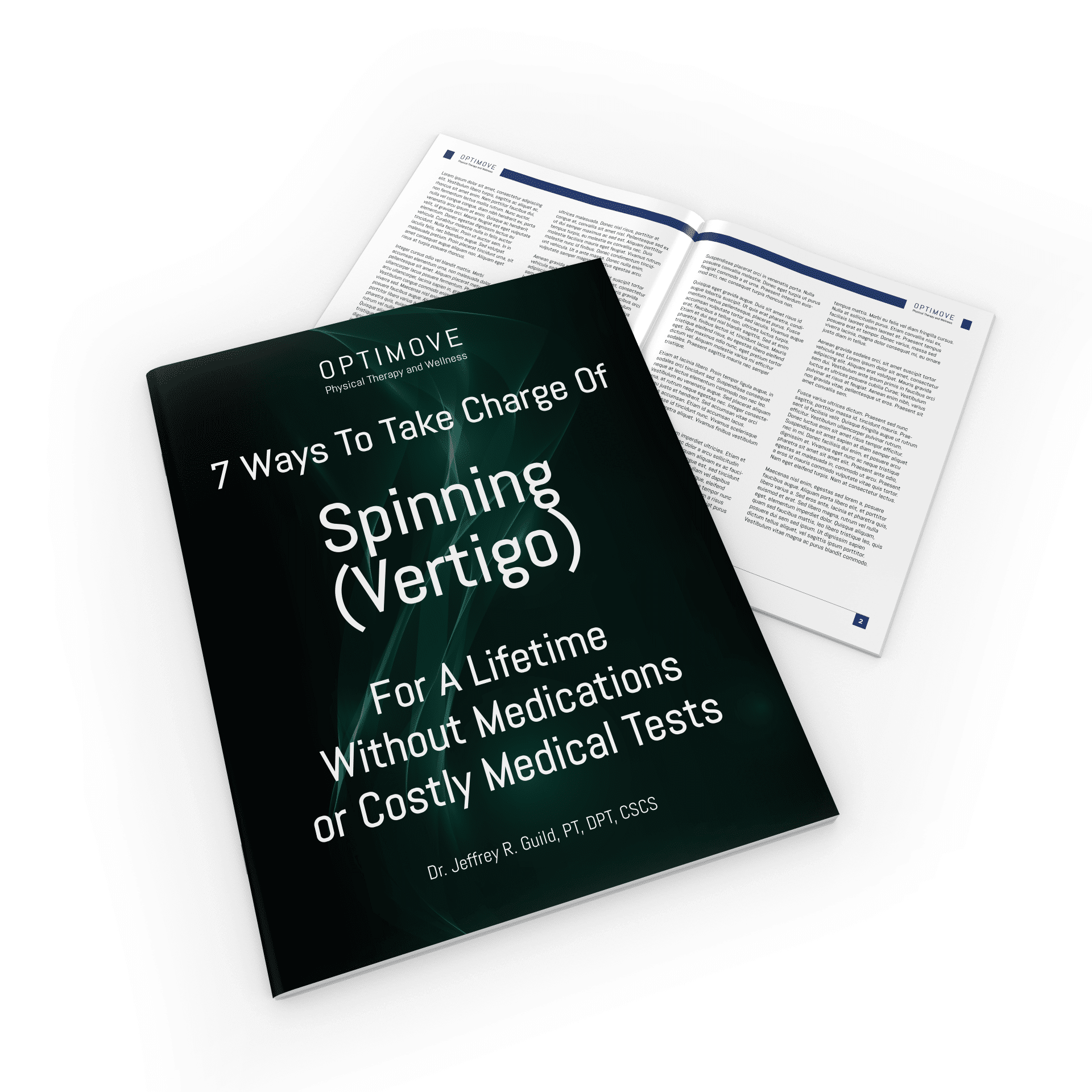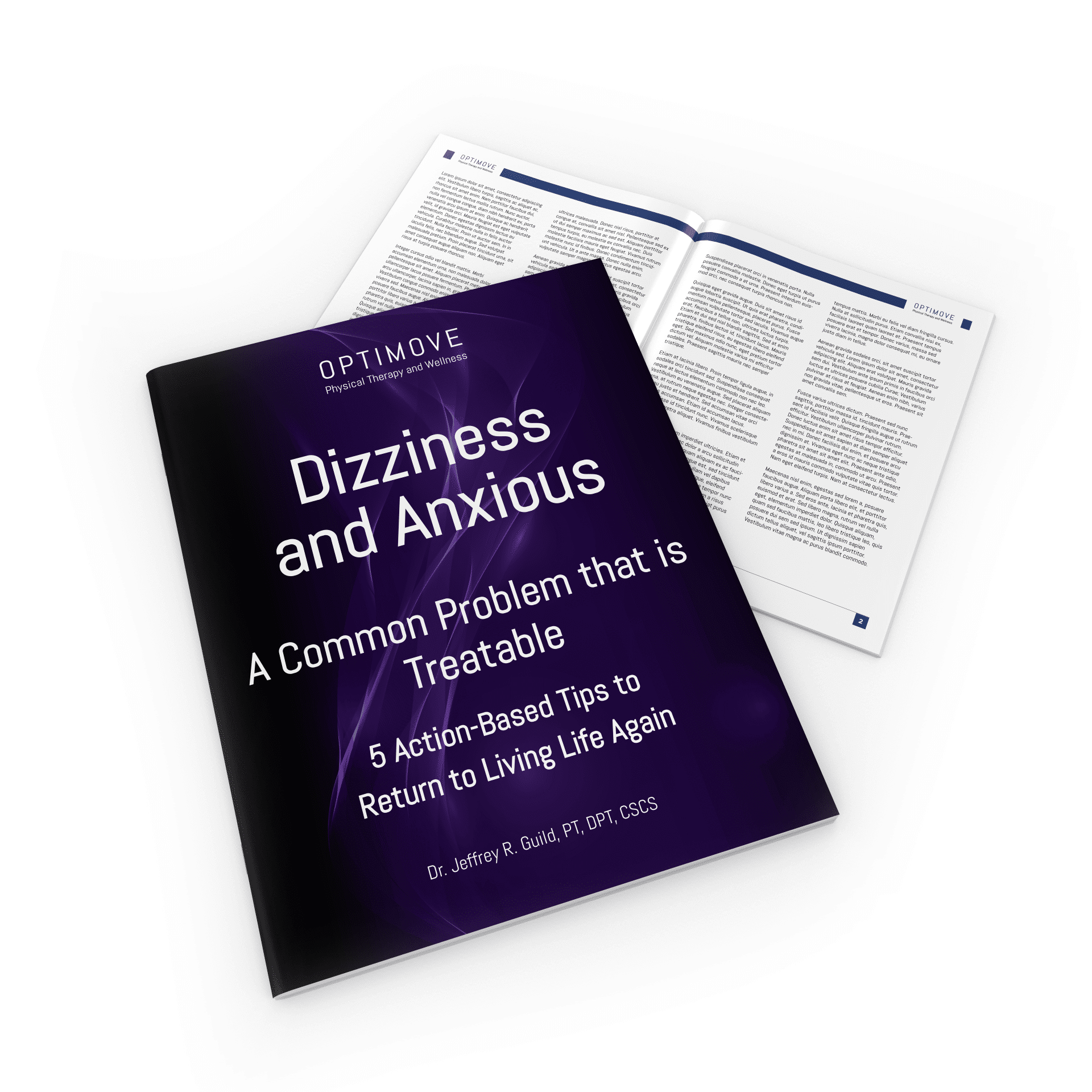I would like to provide you with some valuable information regarding the complexity of diagnosing and treating positional vertigo. It is important to seek out a specialist who has experience in treating this condition, as it can be challenging to diagnose and treat. Treatment may involve repositioning maneuvers and multiple sessions, and it is crucial for patients to follow their specialist’s instructions and continue with follow-up appointments.
It is worth noting that vitamin D deficiency and medical complexity can increase the risk of positional vertigo. Therefore, it is essential to rule out more serious conditions before determining the cause. However, with appropriate treatment, positional vertigo is completely curable. Having a go-to person or team to treat the condition can be beneficial in reducing the severity of symptoms.
In summary, if you are experiencing positional vertigo, it is crucial to seek out a specialist who has experience in treating this condition. Follow their instructions and attend follow-up appointments to ensure successful treatment. Remember that with appropriate treatment, positional vertigo is completely curable.
Do you or an aging loved one struggle with balance and falls? There is hope. Let us empower you to maintain your independence at home and in the community.
Click the link below to book your free in-home discover visit: https://old.optimovedfw.com/balanceandfallsfb
Speaker 0 (00:00:00) – So what is it about positional vertigo that is so complex or causes so much problems for people and why can’t people find the right treatment for it? Why do they go from specialist to specialist to specialist trying to find a solution and they’re unable to find the solution at least on a consistent basis? So let’s dive into find out why when you experience rolling around in bed and the room spins or you just get up and maybe there’s some spinning, maybe there’s just from some dizziness when you walk across the room, especially when you move your head if you’re suffering with these sorts of problems, let’s talk about potential reasons why and how you may be able to get to the right specialist. So let’s dive in. So what we commonly think about with positional vertigo is the clear cut rolling over in bed and then the room spins or we bend down and we pick something up or we bring our head back and then the room spins.
Speaker 0 (00:00:49) – And that’s kind of like your classic positional vertigo. That’s what the textbook will say. That’s what most healthcare providers will think about when they think about positional vertigo. The general public, you might think about it as the crystals getting loose in the inner air balance system and it’s the crystals causing the problem, which is, you know, partly pretty much correct. Now think about the possible things that could cause rotational spinning. It’s not always positional vertigo. So you do want to get to a doctor or get to a physical therapist, get to a healthcare provider and find out why you’re experiencing rotational spinning. Because rotational spinning, if unless if you’re actually spinning yourself around is not normal. It’s not normal to sit in a chair and for the room to be spinning. It’s not normal for the room to spin when you roll over in bed or when you walk or turn your head.
Speaker 0 (00:01:32) – There’s nothing normal about that. So you want to be sure that you get that evaluated and treated by a doctor or a physical therapist. Find out the right specialist and make sure that you roll any other more scary things such as strokes, tumors, or anything else that could be causing it because very unlikely al, although it can happen and sometimes it does happen. So you want to rule those things out first. Once you determine it’s not one of those things, then what positional vertigo is basically caused by calcium carbonate crystals in our inner ear balance system that get loose and go into a place where they’re not supposed to be. That’s kind of the, the short of it. Now, the longer version of that is you have calcium carbonate crystals in your inner ear balance system. So yes, you have rocks in your head, your family’s been telling you that for years your spouses in significant others and everybody else has been telling you that for years you have rocks in your head.
Speaker 0 (00:02:23) – As do I. And my wife’s been telling me that for a long time these rocks are made out of calcium carbonate. And what happens is those calcium carbonate crystals tell our brain about acceleration. When we’re speeding up in a car and we’re slowing down or when we’re in gravity in general, we basically, our brain understands that we’re in gravity because gravity is acceleration it with a four specter that goes down basically towards the center of the earth. And so these calcium carbonate crystals basically float in a fluid called endo limb fluid. And they’re supposed to do that. They’re supposed to be there and based on the position position that they are in, they tell our brain about acceleration, speeding up, slowing down, changing direction. What they’re not supposed to do is get into another part of our inner ear balance system called the semi-circular canals.
Speaker 0 (00:03:11) – Now these are basically tubes that basically tell our brain about head rotations. So when we walk and turn our head or we stand and turn our head when we walk across the street and have a conversation while we’re boarding a pothole and stepping out the curb and looking for cars, we are able to balance ourselves and not be dizzy and walk a straight line and walk fast and to think about other things at the same time. A wonderful system when it works well. And so these canals basically tell our brain about when we’re rotating our head. So the area in which the calcium carbonate crystals live and these canals are right next to each other. And if those calcium carbonate crystals get into those canals, that’s basically what causes positional vertigo. It is not supposed to happen. They are not supposed to be there. However, it does tend to start happening.
Speaker 0 (00:04:02) – We usually start seeing that around age 40 or so, and that’s when people tend to start getting positional verti. Now that’s not to say that someone a few years younger than 40 cannot get this. And of course if a younger person, let’s say 20 years old gets a head injury, they’re more likely then to get positional vertigo as a result of the head injury. Less likely than older people. Let’s say, you know, an 85 year old who hits their head, they’re very likely to get positional vertigo from hitting their head younger people. It happens with the head injury but not as common. What do we do about this? So these calcium carboning crystals get into the wrong spot. So the treatment for this condition is a repositioning maneuver or a number of different repositioning maneuvers that can be used. And the great news is there’s a number of different maneuvers now that are well supported by the research that to be very effective for treating this condition.
Speaker 0 (00:04:55) – And so if you go to a vestibular specialist and that’s what these professionals are called who treat positional vertigo, go to a vestibular specialist and ideally that person will know how to treat this condition. This condition is completely curable and there’s no reason why you should not get complete resolution of the condition and your symptoms with appropriate treatment. Of course, if there’s multiple inner ear balance diagnoses or vestibular diagnoses going on, if it’s more complicated than just positional vertigo, that can be a different story. It’s not uncommon for a person to have multiple vestibular disorders. So they might have positional vertigo and vestibular migraine at the same time, or positional vertigo and even labyrinthitis at the same time. Or miner’s disease or any of these other diagnoses that you may or may not have heard of before. You can have multiple inner ear balance or multiple vestibular diagnoses at the same time. Inner ear balance vestibular, think of it as the same system. There’s probably not one
Speaker 1 (00:05:56) – Great name for this system. I will also call it these main central balance system. The positioning for positional vertigo can be very clear cut, it can be very, just follow the textbook and you’ll get complete resolution and treatment. However, sometimes it doesn’t quite go that way. So a lot of healthcare providers, they’ve gotten a little bit of information in graduate school and you know, all they have to do is google the reposition maneuver, you know, right before the patient walks in the door and they can just go by the sheet and like, okay, do this, do this, do this. And they can get some success and actually treat the condition successfully. And they might be able to do this even multiple times. However, eventually someone more complex will come in and whether someone’s more complex doesn’t have anything to do really with the individual person, it’s just the way that the positional vertigo is, it might be a different canal that’s involved because we have six canals overall.
Speaker 1 (00:06:50) – We have three on one side and then we have three on the other side that basically tell our brain about where we are in space. And each canal is connected with the X, Y, Z access on each side. So there’s six canals that can possibly be involved. So the first thing to do, the healthcare provider has to figure out which canal is involved or there can even be multiple canals involved. It could be two on one side and and one on the other side. It could be two and two, it could be just one. So first you have to figure out how many canals are involved. So that’s the first thing. Then it’s important to understand that there’s multiple ways for positional vertigo to test, should we say positive. There’s more than one way to get a positive test for positional vertigo. It’s not just usually what the textbook says.
Speaker 1 (00:07:32) – So the textbook will say it will happen when you bring the person into the testing position and then the room spans and then there the eyes do this weird thing where this rotational upbeat thing called nystagmus. Okay, there’s two other main ways that a person can be positive for positional vertigo just with one canal. And so it’s important that the healthcare provider understands those other ways and it does not always look so black and white. And so it can take coaching and mentoring and repetitions treating this thousands and thousands of times for a healthcare provider to become very specialized in treating positional vertigo. Now that’s not to say that you know, if you go to, you know, an outpatient orthopedic physical therapist and they say, well yeah, I’ve, I’ve treated this a few times, let’s give it a go or you know, go to a doctor who somewhat knows what they’re doing to treat it.
Speaker 1 (00:08:20) – That’s not to say that they won’t get success with it. And you could see amazing results and the problem could be gone. The problem is because of that inconsistency with that success is when people go to someone who they think is a vestibular specialist or they got the treatment for the condition, they think that, well I already tried that and didn’t work. And so that’s where people tend to run into the struggle of, I tried that before and it didn’t work. I went to a vestibular specialist and they weren’t able to help me. I went to an ear, nose and throat doctor and they just did something real quick and then just said it should be fine now. And it’s not. Now I’m feeling worse. I went and I did all this testing and they spun me around the chair and they put water through my ears and they made me feel absolutely horrible and I could, couldn’t even drive when I left the parking lot, but they did all this testing.
Speaker 1 (00:09:02) – If I don’t have a solution, I don’t have an answer, I don’t have a diagnosis, I don’t know what’s going on. I don’t know why I’m also getting this eye pain. I don’t know why my head feels lightheaded or the this earful that I’m experiencing. Uh, I feel like I’m getting Alzheimer’s disease cause I can’t think clearly anymore. These are common stories that people will experience when they have something for me is as simple as positional vertigo. For me it’s every day. It’s round the mill. It’s the most clear cut vestibular diagnosis in my opinion. There is, it’s also the most common, but as we’re talking about today, it’s not that clear cut. Even the most clear cut, what I perceive as simple vestibular condition is not quite so clear cut and can show itself in many different ways. And so we have to become very specialized if we’re gonna say that yes, I’m very confident that we can treat this condition.
Speaker 1 (00:09:56) – So all well and good. So first off, you have to find, of course you have to rule out, make sure that it is positional vertigo or vestibular related and not a stroker, a tumor or something else that’s causing the rotational spinning. Next you have to figure out, okay, what canal is involved After you find the right specialist, you have to find out which canal is involved and on west side is it on? And then you have to find out if sure enough it is positional, vertigo and not something else because we also have to tease that out. And remember that when someone is experiencing dizziness and lightheadedness, fogginess spinning, it can be very confusing to figure out what symptom is what. So when the patient goes into the healthcare provider and they’re reporting all these different symptoms, it can be very difficult to figure out what is really going on.
Speaker 1 (00:10:41) – So again, less of that. The stabler specialist really knows what they’re doing. They’re really specialized. They’ve gotten coaching and mentoring and they’ve studied this a lot. It can be difficult to tease out, but some of these symptoms are and it gets worse as people get older. It can feed into the problem of the assumption that well just dizziness comes with age balanced problems comes with age. And remember positional vertigo becomes more common as people get older. So it’s a very high rate as people get 70 plus. And so the symptoms are also complicated more so generally than compared to let’s say a 40 year old that gets positional vertigo. These symptoms become more complex and muddled. An older person may not even report rotational spinning. They may have just woken up one day and all of a sudden they were having dizziness walking across the room or they were just more off balance and they may not even have dizziness.
Speaker 1 (00:11:33) – So it can become very obscure and complex with people generally over age 70. And the more medically complex they are with the younger generation does tend to be more clear cut, but it doesn’t tend to look that way as much as people get older. Now from here, once you’ve figured out which canals involved, then what? Then you have to basically figure out what treatment to do. There’s a number of different repositioning maneuvers that are very effective and well supported by the research and there’s a number of different choices so much now that it’s almost like there’s too many choices for the vestibular specialist to go. And that can depend on the individual person. Now sometimes positional vertigo, it can be treated in just one treatment session, one and done and the problem is done. It can be much longer than that. I’ve seen up to nine or 12 times in having to utilize three or four different repositioning maneuvers and even adding in some variations of those repositioning maneuvers.
Speaker 1 (00:12:29) – So it can become very complex, although not always. And again, this feeds into the problem that people are experiencing when they’re trying to find a solution. It can be very clear cut, it can be very simple, but then it can also at times be be very complex. So it’s not as straightforward as I have an ear infection and let me try one type of antibiotic. Okay, that one didn’t work. Okay, let me try the one that’s a little bit stronger. Okay, that one worked. That’s what people tend to be used to. That’s what people want to happen is what I want to happen. But in not all of these conditions is it like that? It can be more complex, although it’s can also at times be simple. Now once you find the specialist who’s able to treat the condition and then solve the problem for you, it’s also very important that you adhere to the instructions that they give you and then also continue with all the follow-ups that they recommend because just because you might be feeling better after the first treatment or the second treatment and you think the problem is gone, it doesn’t necessarily mean that the problem is gone.
Speaker 1 (00:13:29) – It could mean that there’s less crystals floating around than before and maybe they’re just kind of huddling and hunkering down now and they’re not moving around as much. It could mean that you have now restricted your head movement because you don’t wanna experience the symptoms. You might be doing this consciously or unconsciously. You may not even realize that you’re restricting your head movement. You’re not bending down and looking up and you’re just holding your head tight and going around like this, rotating your whole body and your head together as you’re walking around and changing directions and everything else. But you’re not moving your head freely like before. So your symptoms are improving because one, your body becomes more desensitized to the condition. But also there could be some crystals in there that are just hunkering down and staying low and there’s a sticky membrane there that also tends to pull those crystals in place so they can even get stuck down there literally.
Speaker 1 (00:14:19) – And then we as VA specialists have to do a little bit more to get the crystals unstuck. So you can see how complex this can become for someone who’s not a specialist. And so if you’re experiencing these problems and you have a little bit of symptoms still after treatment, you should not have a little bit of symptoms after treatment. If you have a little bit of symptoms, still the problem is not resolved. And that’s very important to understand. There should be absolutely no rotational spinning after treatment unless if you have another explanation for the rotational
Speaker 2 (00:14:50) – Spinning probably from a neurologist, sometimes that happens. But regardless, you should, if you are experiencing rotational spinning after treatment for a positional vertigo, you should know exactly why. Very unlikely will you experience rotational spinning after the treatment of vertigo a couple days after the fact. You should have a complete resolution of the symptoms within a day or two after treatment. And if you’re not, then it’s likely not treated completely and all the way through. Or there’s some, if you’re experiencing dizziness or you’re just still experiencing some symptoms, there might be some other vestibular problem going on and is very common. This is well support in the research that a lot of people who are treated successfully for positional vertigo are then have other remaining vestibular deficits that need some treatment, some fine tuning, some tweaking, some strengthening because the system’s been kind of knocked off.
Speaker 2 (00:15:41) – So make sure that you follow through with the vestibular specialists. See them as many times as they recommend because even if you’re feeling better, what you need to get is a complete negative test of all the canals that could be possibly involved and make sure that you’re symptom free completely. And if you’re not, you need to work with that vestibular specialist and find out why you’re not symptom free. This problem should be completely gone. That’s kind of a big takeaway. Now what if the positional vertigo comes back or what can you do to prevent the positional vertigo from coming back? So couple things. One, the research well supports that you’re treated successfully for positional vertigo and your vitamin D deficient, you are significantly more likely for the vertigo to return. So you want to talk to your doctor and have your blood work done, make sure that you’re not vitamin D deficient and talk to your doctor about the right dosage of vitamin D supplementation that you should get in order to reduce the risk of the positional vertigo returning.
Speaker 2 (00:16:36) – Now of course, vitamin D supplementation is something that’s good to do anyway if you are deficient in vitamin D and most doctors nowadays recommend that and are screening for it. Also, think about these calcium carbon and crystals. So again, you think of the term calcium, these calcium carbon and crystals are basically physiologically connected theoretically with our bone density system. There’s lots of theoretical talk in the research as to what the connection is and everything else. What we do know for sure is that there’s a very strong association between the the stigma system, inner ear balance system, central balance system, whatever you wanna call it. And our bone density system. So much so that the researchers basically say if there’s a problem in the vestibular system, make sure that you’re checking the bone density system. If there’s a problem in the bone density system, check the vestibular system because the two are so associated with one another. Statistically, if there’s a problem in the one check the other. What also increases the risk of positional vertigo is just medical complexity in general. And especially things like hypertension is thought to be a trigger for positional vertigo. Now of course we run into people all the time that are perfectly healthy and they’re strength training and they don’t have any bone density problems and they’re taking vitamin D, there’s none of these things going on
Speaker 1 (00:17:48) – And they, they get positional vertigo just because, and there is that factor to it. There is an element to it, there is that element of randomness, complete randomness where people will get positional vertigo and nobody knows why. We don’t know why, they don’t know why and we can’t figure it out. But we know that it, it can be completely random and the vertigo returning can also be completely random. Now there’s other times we can link it back to, well did you take the vitamin D that we talked about? Well no. Or I was taking it for a while and I was fine and well I stopped taking it for this reason and you know, and then it came back. Okay, it could be because of that or it could have no reason at all. So also important to understand that nothing really causes positional vertigo.
Speaker 1 (00:18:31) – Sit ups don’t cause positional vertigo swimming, none of these things cause positional vertigo. These are the stories that I hear all the time and these are logical things cuz what tends to happen is people will be doing these things in everyday life. They literally, you know, be doing crunches or they will be swimming or they will be doing something when the vertigo comes on and they will tend to blame that event, what they perceive as an event. Because when you get positional vertigo, when all of a sudden the room starts spinning around you, believe me, that is an event. When you experience that, it becomes an event and you remember every little thing about it. So those sit-ups I was doing, it does not, what can cause positional vertigo, especially amongst older people is head injuries and, and I saw one case where someone got stuck in an under tow and they got whipped around quite a bit and get, yeah, they didn’t hit their head.
Speaker 1 (00:19:21) – But there’s a good possibility that a violent jolt of the head could cause it maybe a whiplash injury. It takes a violent event to actually cause positional vertigo. It’s not something like swimming or doing sit-ups or just the active bending down. What happens is it’s the head movement that gets the crystals to move. That’s what gives the person the symptoms of the positional vertigo or the symptoms of rotational spinning in that moment. And then of course they remember it as would I and then it becomes a big event in the person’s mind and they are very clear on that memory and that’s okay, that’s very normal and that’s fine. Just understand that the positional vertigo was already there, it was just the head movement that you happened to go into that caused it. It wasn’t the massage, it wasn’t the hairdresser or any of these other things.
Speaker 1 (00:20:14) – It cuz people will commonly get positional vertigo when they bring their head back and to get their hair washed. And that’s very common because it’s that head movement that gets the crystals to move. So that’s when they’ll start experiencing the symptoms and that might be the first symptom that comes on. So these are very common stories that we tend to hear with our clients. So if you’ve had positional vertigo in the past or you tend to get it off and on, then it’s very important if you find the right vestibular specialist, make sure that you keep up with them, keep their number or find a way that you’re able to contact them if at all possible. Now, now with hospital systems, sometimes they don’t give that information out. So you, you might find a small business of some type of small practice that has these sorts of specialists.
Speaker 1 (00:20:56) – Basically you want a go-to person or go-to team people that’s able to treat this condition basically when you get it, you don’t want to wait, you don’t want to go on suffering and have to having to find a different healthcare provider to treat the condition each and every time. And we’ve also found doing this with people. Cause with our clients they basically just have our number on speed dial so to speak. And then they’re calling us up right away when they experience the first symptoms when they’re able to do that. We found that people suffer less from the problem because the first time or the multiple times when they experience it, but they’re the condition is not treated properly, they tend to experience horrible symptoms and it can be very terrifying with a lot of dizziness and sometimes even throwing up in all this stuff when they have someone that they can reach out to, it tends to be not as big of a deal.
Speaker 1 (00:21:46) – It tends to be much more matter of fact, it’s, oh it came back, okay, when can you come on over? And then we do our best to get out to people very, very quickly because they don’t wanna go on with this, they don’t want to continue suffering with it, they don’t wanna deal with it, they just wanna get back in living life again. And so that’s what we focus on is getting out to people as soon as possible when they call in and say, Hey, my vertigo came back. And then we’re able to get them more quickly and again. And the benefit is at that point for them it’s much more just matter of fact, it’s much more straightforward, it’s much more, okay, let’s do this get done. Okay, alright, good, I’m glad you’re here. You know, as opposed to a very terrifying experience when we get there and oh my gosh, this started several days ago and it’s been horrible. And that is a normal response for that type of experience. And so what we work to do is minimize that suffering that people have. So if you like this information, you found it beneficial and you want more like it, follow us and click the link below and follow us on this channel and you’ll get a lot more information that will be helpful for you and someone you care.






